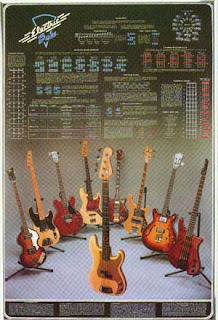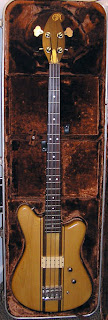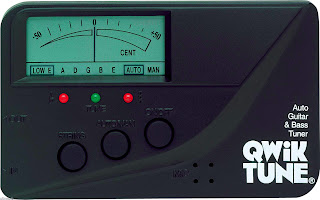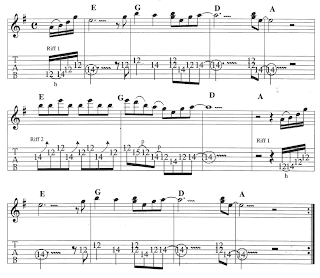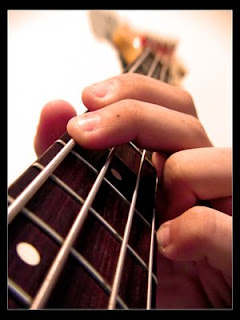How to Buy Your First Electric Bass Guitar Online

The stories are varied, sorted, and some, like all good steely yarns are mythical.
"Dude, I walked in to this ol' fisherman's shop and there, hanging on the wall was the bass, the bass that would be the first and last bass of the rest of my life!"
Some are practical.
"ActiveMusician was having a sale, I picked the first one I saw, it was like blue, I like like blue, and hey, like blue for $150 bucks who could like argue?"
OK, OK, so we would all hope that picking out your bass would land somewhere in between these two extremes, somewhat mythical with just a hint of practicality. Either way it would be nice to have a good story but let's face it, you probably have a guitar player friend that wants you to join his band as the bass player. "How hard could it be to buy a bass guitar online?" he says. Well, the truth is, not very hard at all. Let's read on.
First, let's decide what it is you would like to do with your bass. Do you want to practice for 18 hours a day? Bring it home and be playing gigs within the week? (bad bass player joke withheld for editorial concerns). Hang it on a wall with a custom guitar hanger and never play it? Well, I would assume it's somewhere in the middle. As a long time bass instructor, I would encourage you to practice 18 hours a day but hey, that’s just me. OK, 4 hours. 4 hours is OK? Then 5 hours - git back in there. I want 5 more hours before supper!
"OK, so my guitar player friend says I'm interested in the bass, how do I start looking? What do I look for? How much is this new interest gonna cost me?"
If you're unsure if your new band is even going to last through next week, there's a good crop of Squier basses for under $200, like the Squier Affinity P Bass, the Squier Affinity J Bass and the Squier MB-4. Very playable, solid sound, and very affordable. If you've already got next month's show booked, then I would recommend a mid-level bass, something in the $500 dollar range. The Fender standard four string is the kind of bass that will give you a professional sound right out of the box. It has professional, quality-made pickups, and for those of you who live in the warm climates of the South or the cold un-forgiving winters of Canada (hey, I'm from Canada), the neck will stay fairly straight and won't bow like a banana at the first sign of extreme weather. Fender has been building basses since the beginning of time and they're always a safe bet for your first instrument.
Buy yourself a tuner! Let's face it, playing the bass isn't rocket science (at least initially) and you'll be plucking out songs in no time and wanting to jam with that guitar player friend of yours. When the jam starts you'll want to be ready to play so a tuner (especially for beginners) is essential in getting you up and playing quickly. It will also help to make sure you're in tune with all those CDs you're gonna want to jam with (during your 18 hour practice day). I've had much success with the Korg DT-3 Guitar and Bass Tuner, which I actually picked up from this very site (thank you very much). It's sturdy, small, easy to use, and has nice large lights on it for old guys like me, and maybe you if this is some sort of mid-life crisis thing.
Next you want to get yourself a practice amp. In this area you want to think small, mighty, and preferably combo, which, for those that don't know, is the speaker and amplifier in one easy to lift package. Most people make the mistake of getting something that isn't loud enough, they truck it over to that same guitar player's house, this time a drummer's shown up (he convinced him too), and your bass parts (and yes, hopefully they're parts) become a distorted mess. Bass is meant to be warm, fuzzy, like a furry animal that you love and feed until it gets really fat and everyone drops by to pinch its cheeks. For this we need something that will comfortably fit in our practice area and still be loud enough for the perennial cheek pinching.
I generally tell people that if you can get a bass amp over 100 watts, you'll be safe. Behringer is making great combo amps these days and you can't beat the price. Check out the Behringer Ultrabass BXL3000A - 300 watts, a large 15" speaker and you won't blow a disc when lifting it into the rehearsal space.
After a while, you'll notice that the bass isn't sounding, well, all that great anymore. What ever could be the problem? That problem is old strings. Now I have my particular favorites and like any of you know who have made it this far in the article I'm not going to sugarcoat it. Basically, I don't understand steel strings at all - people say they last longer but I'm a nickel man and I'll tell ya why. For any of you who have tried steel strings, you'll notice that they feel like they have a sticky, dry kind of feel to them. For me, the fingers of my right hand feel as though they are literally sticking to the stings. For this reason, I recommend something like D'Addario EXP170SL Bass Strings. They are soft on your hands while you do dishes (OK, bad commercial reference for anyone over the age of 35) but really, they are silky smooth and they sound a lot brighter than steel!
Wanna know how to spot a Beginner? They're the ones without the gig bag. That's right, you know who you are. You've bought a bass and hey, the case is included! I say that's fine for protecting your bass when you move cross-country, but for everyday use, get yourself a gig bag. You'll look cooler and one arm won't become suddenly longer than the other on the repeated trips over to said guitar players house. The Fender Deluxe Gig Bag is the obvious fit for your new Fender bass. Wear your bass in style! People will stare, point, and say, "hey, now there goes a real musician!"
OK, hopefully that helped a little. Now go and buy that bass, and tell them Chris Tarry sent ya! I'll wait..... Got it? Good, now get in that practice room!




